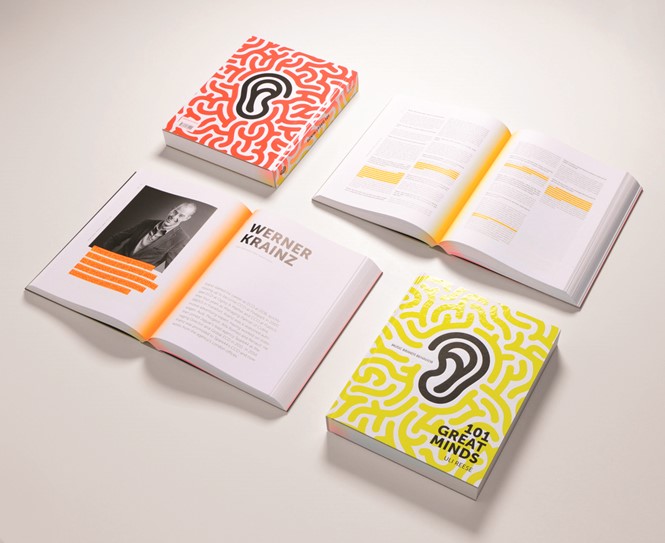Start the music

Music has traditionally been a secondary consideration for brand managers and agencies. Audio branding is changing that. Steve Keller, CEO of iV2 audio branding shares key insights on the value of music, sound and audio branding from the recent book by Uli Reese, president of iV2, ‘101 Great Minds on Music, Brands And Behavior: Conversations at the Crossroads of Audio and Advertising.’
How important is music in building a brand? What drives creative decisions around music in advertising? How does sound shape consumer perception and influence behavior? What role does research and measurement play in evaluating audio choices - and return on investment?
As an audio brand consultancy, these are questions we wrestle with every day, in pursuit of better ways of helping our clients harness the power of sound to engage consumers, increase awareness and drive purchase intent. In 2010, Uli Reese, now president and founder of iV2, and I decided it was time to turn those questions outward, hoping to benefit from the insights and experiences of key influencers in the worlds of branding and advertising.
Armed with a digital recorder and a passion for discovery, Reese set out on a mission to engage industry leaders in honest conversations about music and advertising. Those conversations were ultimately compiled into a book that contains over 400 pages of candid interviews, titled ‘101 Great Minds on Music, Brands and Behavior.’
As we we connected the dots, we learned a few things along the way.
It’s clear that all these mover and shakers share a profound confidence in the power of music to engage consumers, impact behavior, and enhance brand identity. They recognise that buying decisions happen at an implicit level, and that music is one of the most powerful implicit emotional drivers at their disposal. They understand that music is a tool that allows brands to communicate across cultures, trigger memories, strengthen brand associations and build top-of-mind awareness in a marketplace that offers a dizzying array of consumer touch points.
In the end, each of these 101 great minds are resolute in their belief that music (and more broadly, audio branding) plays a fundamental role in shaping consumer perceptions and communicating brand intent.
But dig a little deeper, and many seem to wrestle with turning these beliefs into an actionable strategy that produces measurable results. Often, that struggle is systemic, built into agency paradigms that divide the world into categories of strategists and creatives. Time and resources are devoted to visual and verbal communication first, relegating music to a last minute decision driven more by campaign-centric executions rather than brand-centric strategies. Testing itself is a polarising concept. Some insist that testing should inform creative decisions, while others are certain that it only gets in the way of creative expression. When it comes to ROI, there are problems with assessing the monetary value of a piece of music and justifying the associated costs. Discipline in consistently applying audio standards can be a challenge, particularly within corporate structures where key decision makers, agency partners and brand managers may all have varying opinions, preferences and goals.
Here are four suggestions we think can help:
First, change the way we think about music. Historically, music has been relegated to the world of the creative director. In this context, there is a preoccupation with execution: write a brief, gather demos or tracks from third party vendors or artists, have editors throw something against picture, then pick a winner. Approached this way, music is often the last consideration, with the decision making process suffering from constraints of time and budget.
Instead, we should consider music from a process perspective. That process begins with understanding brand intent, moving through the stages of discovery, design, creation, evaluation, implementation and management. Our music choices should be intentional, based on a clearly defined strategy, designed to align brand intent with consumer perception. Ultimately, music is a reflection of the brand itself: congruent, distinct, recognisable, likable and ownable.
Second, recognise that testing is not the enemy of creativity. Rather, inadequate testing, and improper data analysis, are the enemies of creativity. When it comes to measuring the impact of music on brand messaging, most brands limit their exploration to likability and preference metrics. While likability is an important consideration, it tells you nothing about congruency, recognition, consensus meaning, free associations, or explicit/implicit emotional drivers, all of which are measures that can offer valuable insights into the development and optimisation of a brand’s sonic identity.
Even with adequate testing, there’s another hurdle: confirmation bias on the part of the stakeholders. In a recent study by the Economist, 90% of the executives surveyed said they based their decisions on data analysis, testing, and collaborative discussion. Yet in the same survey, nine out of 10 of these executives would find a way to disregard the data if it disagreed with their intuition. It’s not enough to gather the data. We need to incorporate it into our decision making process.
Third, measure returns, but move beyond ROI. There exists little to no research dedicated to applied econometrics and predictive analytics that help us determine the value of music in the context of branding and advertising. In the absence of any clear methodology, brands and their agencies are left without any formula for determining costs or returns for music and sound assets. As a result, cost controllers at agencies and brands are at a clear disadvantage when negotiating costs or understanding how to leverage and collateralise potential audio assets. Additionally, copyright holders and content creators have little ability to demonstrate returns and simply determine the price of creating or procuring music based on whatever they think the market will bear.
The traditional approach to calculating ROI may not be the most effective measure. While ROI may offer a short-term measure of the value of music in a specific campaign, other measures like ROE2 (return on experience x engagement) could offer a more holistic reflection of a consumers’ total experience with the brand and a better indication of the value of music over time. Scheier’s recommendation of considering audio as a KPI could further integrate music and sound into the brand management as a whole.
Finally, move beyond engagement and focus on behavioral outcomes. With all the talk of music’s power to engage us emotionally, we should take care not to think of emotional engagement as an end in itself. Music can make us feel. It can also make us act. Behavioral goals and habit formation are measurable outcomes that can bridge the gap between brand intention and consumer response. We should be strategic and intentional in making decisions about music that does both.
So here we are, 101 great minds later, standing at the intersection of audio and advertising. Hopefully, these conversations will lead us think of music as both tactical tool and strategic weapon. As audio branding specialists, we’re a bit like alchemists, combining empirical methodologies with well developed creative instincts. It’s a blend of art and science that, when done well, looks like magic.
“It’s hard to overestimate how important music is. It can transform a message.”– Sir John Hegarty, founder and creative, BBH
“Music, like smell, evokes more emotions than vision. It’s almost instant recall. And those things are incredibly powerful when you’re creating a brand or working with brands.” – James Hilton, co-founder, AKQA
“Music plays a huge part in
storytelling. It sets the scene,
the mood, the tempo of a film. It’s
visceral and emotional. It cuts cross
generations, culture and time.”
– Tham Khai Meng, co-chairman and worldwide CCO, Ogilvy & Mather
“Music is so important. But it’s still a very underdeveloped theme in our industry.” – André Kemper, founder, Antoni
“By far the hardest thing about music is selling it to a client. It’s so subjective. Everyone is an expert. I’ve never had a case where everyone agreed on the music. Never ever.” – Tor Myhren, VP of marketing communications, Apple
“Music is possibly one of the most underused and yet most powerful forces at our disposal.” – Andy Payne, global CCO,
Interbrand, London
“If marketers realise that sound is more than a device to activate emotions, but rather a type of language with which the essence of their brand can be conveyed, only then will they gain a better grasp on the value of audio.” – Dr. Christian Scheier, founder, Decode Implicit Marketing
“A lot of musical choices in advertising are about gut feeling – but I’d love to know scientifically a little bit more about how that works.” – Mike Sheldon, CEO, Deutsch North America
“Out of 10 CEOs, how many do you think would see audio as a key success driver in the first place? To me the really crucial question is whether you have a KPI (key performance indicator) on the brand.”
– Dr. Christian Scheier, founder, Decode Implicit Marketing
“I think music can change perception. And if you change perception, it will eventually change behavior.” –Shelly Lazarus, chairman emeritus, Ogilvy & Mather
“It’s not about the right sound or the right piece of music. It is about the strategic question: What should my brand sound like? Which is a completely different thing.” – Amir Kassaei, CCO, DDB Worldwide













